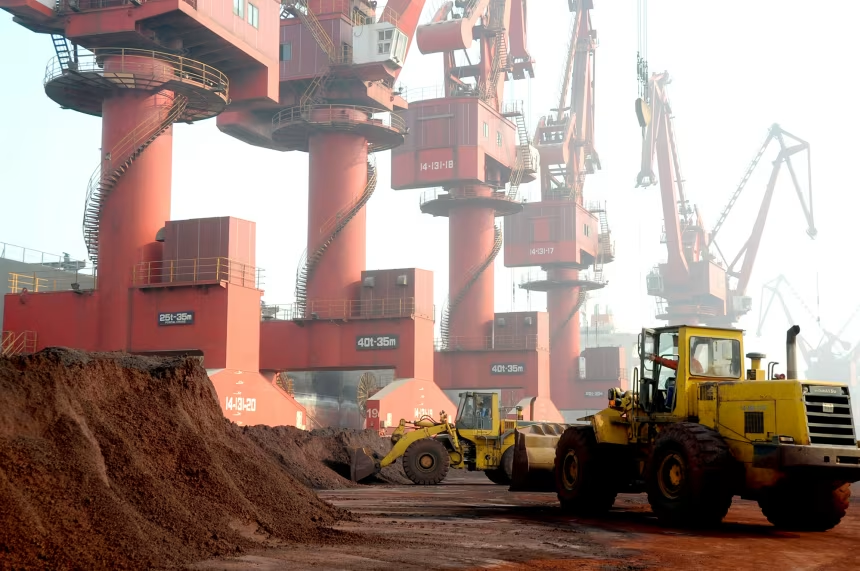How China Weaponized Rare Earths and Declared Itself the New Superpower
For decades, nations have competed not just for oil or technology—but for the minerals that make modern civilization possible. In this contest, rare earth elements (REEs)—the invisible backbone of smartphones, electric cars, and guided missiles—have become the new frontier of power.
Today, China controls this domain almost entirely. But it wasn’t always so. The United States once held that crown. This is the story of how control shifted—and how Beijing turned a niche industry into a geopolitical weapon that now defines its superpower status.
Is Donald Trump Really a Peacemaker?
⚙️ From U.S. Dominance to Chinese Supremacy: A Historical Shift
The American Era: Rare Earths Before China’s Rise
In the 1950s through the 1980s, the United States was the world’s leading producer of rare earth elements.
- California’s Mountain Pass Mine was the global powerhouse—supplying most of the world’s REEs for decades.
- American companies refined and manufactured magnets, catalysts, and electronics that powered everything from color televisions to early computers and defense systems.
- During the Cold War, the U.S. also pioneered REE-based technologies vital to jet engines, radar systems, and precision weaponry.
By the late 1980s, however, environmental regulations, rising costs, and underinvestment made rare-earth production less profitable in the U.S. The industry began to shrink.
At the same time, China saw an opportunity.
The Chinese Entry: Deng Xiaoping’s Vision
In the 1980s, under Deng Xiaoping’s economic reforms, China identified rare earths as strategic national assets. Deng famously remarked in 1992:
“The Middle East has oil; China has rare earths.”
China began aggressively investing in:
- Exploration and mining in provinces like Inner Mongolia (Bayan Obo), Sichuan, and Jiangxi.
- Refining and processing technologies, often at state-subsidized costs.
- Vertical integration — controlling everything from raw extraction to finished products.
Beijing also tolerated low-cost, environmentally damaging practices that allowed Chinese producers to undercut Western competition.
By the early 2000s, as Western producers closed down or outsourced, China had captured over 80% of global rare-earth production.
By 2010, that figure exceeded 90%, including nearly all global processing and magnet production capacity.
🔧 The Making of a Strategic Weapon
How China Gained Total Leverage
China didn’t stop at dominance—it turned rare earths into a tool of coercion and diplomacy.
Key moves included:
- Export quotas (2010–2015): China restricted rare-earth exports, allegedly for environmental reasons—but strategically, it pressured countries like Japan and the U.S. that relied heavily on Chinese supplies.
- Technology lock-in: By subsidizing magnet and electronics industries, China ensured that many global manufacturers became structurally dependent on Chinese materials.
- State consolidation: By 2021, Beijing merged its rare-earth giants into a few mega-corporations, tightening control over prices and exports.
- Strategic reserves: The government built national stockpiles, ensuring control over domestic and foreign supply during crises.
The world got a preview of this power in 2010, when China cut exports to Japan during a maritime dispute. Prices spiked over 700%, shaking industries worldwide.
2025: The Era of Weaponized Minerals
Fast forward to 2025—China is no longer hiding its ambitions.
- In April 2025, it placed new export controls on seven key REEs, including dysprosium and terbium, essential for EV motors and missile guidance systems.
- In October 2025, Beijing expanded the restrictions to include refining technology and machinery, effectively blocking other nations from replicating its capabilities.
- Western nations have accused China of using REEs as geopolitical leverage, particularly in tech disputes and trade negotiations.
As one European analyst put it:
“China doesn’t need to send troops to the battlefield—it just needs to stop shipping neodymium.”
🌏 The Global Reaction: Scrambling for Independence
U.S. Comeback Attempts
The U.S. is trying to reclaim lost ground:
- Mountain Pass Mine has reopened under MP Materials, with partial government backing.
- The Defense Production Act now classifies rare earths as critical for national security.
- Joint efforts with Australia, Canada, and Japan aim to build refining capacity outside China.
Still, these projects face massive hurdles—high costs, long timelines, and China’s 30-year head start.
Europe and Asia Diversify
The EU’s Critical Raw Materials Act and Japan’s recycling programs reflect global urgency. But dependence remains deep. The reality:
Even when the West mines rare earths, it often sends them to China for processing.

Workers transport soil containing rare earth elements for export at a port in Lianyungang. Photo: Reuters
🧩 The Bigger Picture: Power Through Dependency
By dominating rare-earth supply chains, China controls the foundation of the green and digital revolutions—from renewable energy to AI, EVs, and advanced weapons.
This is economic power converted into political power.
It allows China to:
- Influence trade terms
- Extract diplomatic concessions
- Deter military and economic actions against it
China’s message to the world is clear: industrial dominance is the new form of global power.
⚠️ The Risk of Overreach
However, the strategy isn’t risk-free.
- Countries are accelerating decoupling plans.
- Alternative mines in Africa (Malawi, Madagascar) and Australia are gaining momentum.
- The U.S. is forming rare-earth alliances similar to OPEC-style consortia.
If China pushes too far, it could trigger a coordinated global counter-move that diminishes its leverage.
🏁 Conclusion: The Birth of a New Superpower
China’s weaponization of rare earths marks a historic turning point. It has turned industrial policy into grand strategy, using control of materials—not missiles—to bend global markets and politics.
From a mining underdog in the 1980s to a geopolitical giant in 2025, China’s mastery of rare-earth elements is both its crown jewel and its boldest declaration of superpower status.
Whether that dominance endures—or sparks a new resource cold war—will define the next era of global power.

